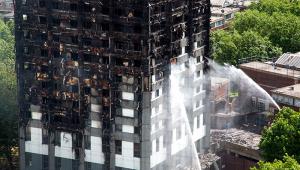A letter has been sent to the leader of Kensington and Chelsea Borough Council from the chair of the Environmental Audit Committee to ask about steps taken to help residents clean toxic chemicals from their home.
EAC chair Mary Creagh is looking for information on the steps the council has taken to deal with the risk of environmental contamination from the fire on 14 June 2017, which killed 72 people.
The committee has previously received evidence that one flat, 90 metres away from Grenfell Tower, was found to be contaminated with hazardous chemicals, such as charred insulation, 17 months after the fire.
The letter questioned the council’s decision not to conduct a “deep clean” of ventilation systems in homes around the site. It also raised concerns over soil contamination.
Creagh said: “It is astonishing that nearly two years after the fire at Grenfell, there are still questions to be asked about a clean-up to deal with the threat of contamination from toxic chemicals.
“Kensington and Chelsea Borough Council must provide answers to evidence, discovered by scientists, of hazardous material in homes around the Grenfell site. People whose lives have been blighted by the tragic events of that night should not be kept waiting for those answers.
“Given that fire debris such as charred insulation has been found inside flats, there’s an urgent need for the council to carry out a deep clean of ventilation systems where this material might be trapped.”
Council leader Elizabeth Campbell said: “The government and Public Health England have assured us that they believe the risk remains low.
“Testing and sampling is under way – we are told that scientists will need time to analyse results and develop a programme that is both comprehensive and gives the community the necessary reassurances.”
Separately, communities secretary James Brokenshire confirmed on Tuesday that the government would take over ownership of the Grenfell Tower site.
Delivering on a commitment made in August 2018, Brokenshire said: “The government will own the site until the community has determined the long-term future use, and an appropriate body has been established, which I am advised could take up to five years.”











